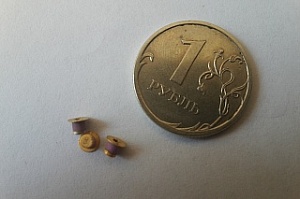Victor Kopyev, a post-graduate student at the Faculty of Radiophysics, is developing an impulse generator for unmanned vehicles, through which the control system can see all objects at a distance of up to 500 meters. Existing analogs have a range of 200 meters.
The post-graduate student is creating the impulse generator based on the avalanche S-diode, a semiconductor device whose patent owner is Tomsk State University. The S-diode is small, consumes little power, and can even work from a battery.
- Currently, in the schemes of pulsed power supply for unmanned vehicles, the key element is a transistor or a diode with an accumulation of charge. We suggest using an S-diode, which will improve the technical parameters of the devices,- says Victor Kopyev. - The pulse generator sends a signal to the antenna that sends it at a distance. The electromagnetic wave is reflected from the objects and returns, enabling the car to measure the distance to the object.
With the help of the S-diode, an unmanned vehicle will be able to identify the objects up to 500 meters away. Now cars see objects only at a distance of up to 200 meters. Another advantage of the system developed by the graduate student of TSU is that it can work in fog and rain.
- Current vision systems installed on unmanned vehicles see poorly in bad weather (rain, snow, and fog), as well as in when the sensor is contaminated, because their work is based on optical cameras and lidars. Our module works in the microwave region, so it will be more effective to determine the distance to the object under different weather conditions. Our development can give a new principle of constructing an efficient, inexpensive, and compact module for ultra-wideband location, which in the future will allow the launch of a competitive innovative product with wide application, - notes Victor Kopyev.

